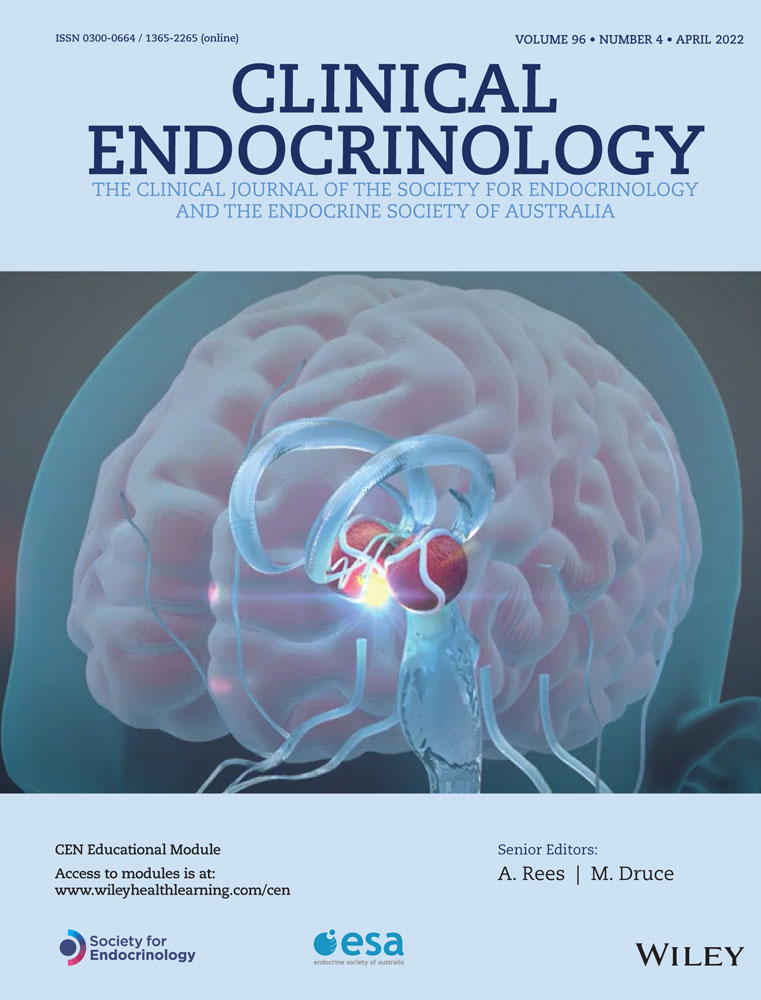Body mass index is inversely associated with capillary ketones at the time of colonoscopy: Implications for SGLT2i use
Abstract
Objective
Sodium–glucose cotransporter 2 inhibitors (SGLT2i) have been associated with diabetic ketoacidosis at the time of colonoscopy. This study aimed to identify factors associated with ketone concentrations in SGLT2i-treated type 2 diabetes compared with non-SGLT2i-treated diabetes, and those with impaired fasting glycaemia (IFG) and normoglycaemia.
Design
Cross-sectional, multicentre, observational study June–December 2020 in four Australian tertiary hospitals.
Participants
Capillary glucose and ketones were measured in people undergoing colonoscopy: 37 SGLT2i-treated and 105 non-SGLT2i-treated type 2 diabetes, 65 IFG and 151 normoglycaemia.
Measurements
Body mass index (BMI), age, glucose, fasting duration and where relevant, HbA1c and time since last SGLT2i dose.
Results
In SGLT2i-treated diabetes, BMI (ρ = −0.43 [95% confidence interval: −0.67, −0.11]) and duration since last SGLT2i dose (ρ = −0.33 [−0.60, 0.00]) correlated negatively with increasing ketones, but there was no correlation with fasting duration. In non-SGLT2i-treated diabetes, BMI correlated negatively (ρ = −0.24 [−0.42, −0.05]) and fasting duration positively (ρ = 0.26 [0.07, 0.43]) with ketones. In IFG participants, only fasting duration correlated with ketones (ρ = 0.28 [0.03, 0.49]). In normoglycaemic participants, there were negative correlations with BMI (ρ = −0.20 [−0.35, −0.04]) and fasting glucose (ρ = −0.31 [−0.45, −0.15]) and positive correlations with fasting duration (ρ = 0.20 [0.04, 0.35]) and age (ρ = 0.19 [0.03, 0.34]). Multiple regression analysis of the entire cohort showed BMI, age and fasting glucose remained independently associated with ketones, but in SGLT2i-treated participants only BMI remained independently associated.
Conclusions
In SGLT2i-treated diabetes, lower BMI was a novel risk factor for higher ketones precolonoscopy. Pending larger confirmatory studies, extra vigilance for ketoacidosis is warranted in these people.
CONFLICT OF INTERESTS
Shananthan Balachandran, Aviva Frydman, Peter S. Hamblin, Raymond Hu, Timothy P. Hanrahan, Shara N. Ket, Alan Moss, Mark Ng, Sashikala Ragunathan, and Shoshana Sztal-Mazer report no conflicts. Leon A. Bach was an investigator in DECLARE-TIMI 58. Elif I Ekinci's institution has received research funding from Novo Nordisk, Sanofi, Eli Lilly, Gilead and Bayer. Elif I Ekinci has served on the advisory boards of Sanofi, Eli Lilly and Pfizer, with the consultancy fees for these donated towards diabetes research at Elif I Ekinci's institution. Elif I Ekinci has received a travel grant from Boehringer to attend ADA virtual conference. Rosemary Wong has received speaker fees from Amgen.
Open Research
DATA AVAILABILITY STATEMENT
The data that support the findings of this study are available from the corresponding author upon reasonable request.




